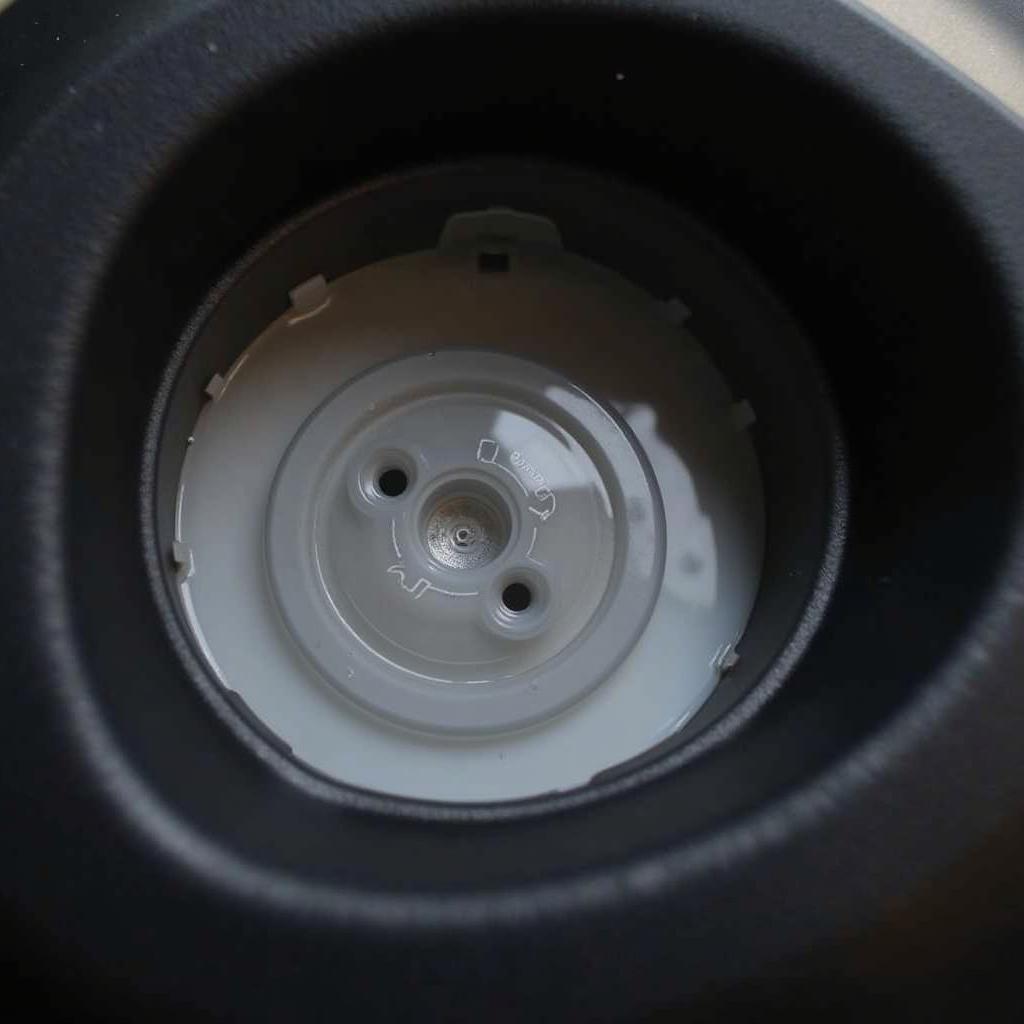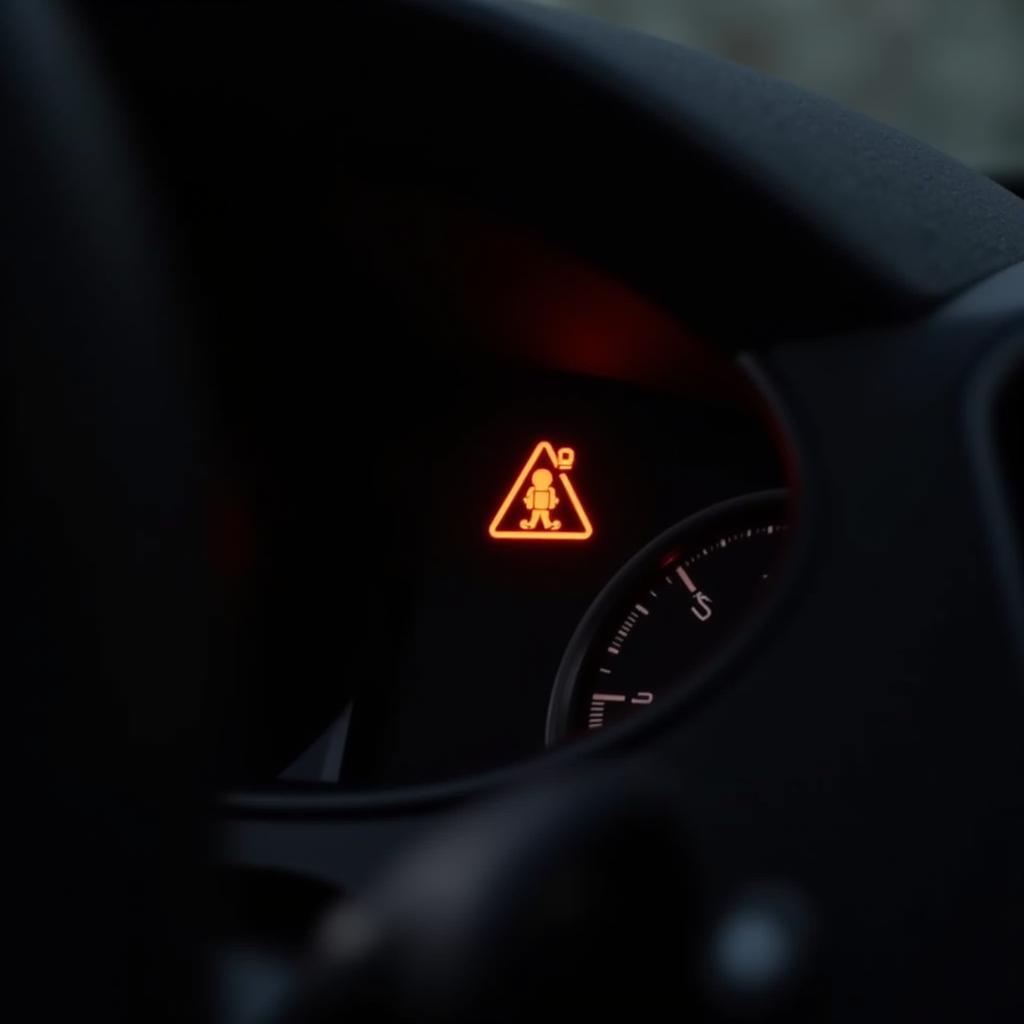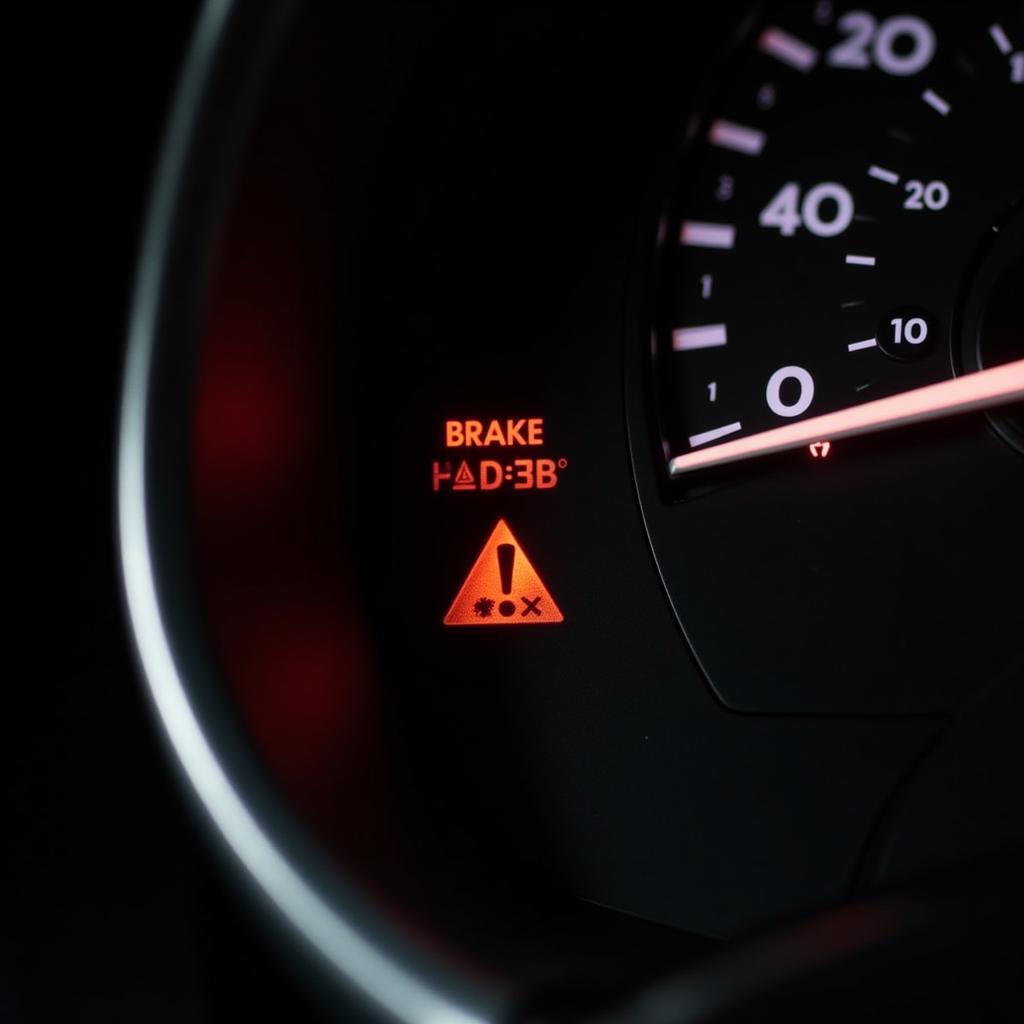The brake system warning light on your Hyundai Santa Fe is an essential safety feature that alerts you to potential issues with your braking system. Ignoring this warning light could lead to brake failure, putting you and your passengers at risk. This comprehensive guide will discuss the common causes of a brake system warning light on a Hyundai Santa Fe and provide you with the information you need to diagnose and address the issue.
Understanding Your Hyundai Santa Fe’s Brake System Warning Light
When you start your Santa Fe, the brake system warning light will illuminate briefly as part of the vehicle’s self-check system. This is perfectly normal. However, if the light remains illuminated or turns on while you’re driving, it indicates a problem that requires your attention.
Common Causes of a Brake System Warning Light
There are several reasons why your Hyundai Santa Fe’s brake system warning light might be on. Here are some of the most common causes:
1. Low Brake Fluid Level
One of the most common culprits behind a brake system warning light is a low brake fluid level. Brake fluid is essential for transmitting force from the brake pedal to the wheels, enabling your Santa Fe to stop.
 Hyundai Santa Fe Low Brake Fluid
Hyundai Santa Fe Low Brake Fluid
How to check your brake fluid level:
- Locate the brake fluid reservoir: It’s typically a translucent plastic container located near the top of the master cylinder, on the driver’s side of the engine bay.
- Check the fluid level: Most reservoirs have minimum and maximum markings on the side. Ensure the brake fluid level falls between these lines.
Note: If the brake fluid level is low, add the correct type of DOT brake fluid as specified in your owner’s manual. However, simply adding fluid might not solve the underlying issue. If you notice a consistent drop in brake fluid level, it could indicate a leak, which requires immediate attention from a qualified mechanic.
2. Worn Brake Pads
Your Hyundai Santa Fe’s braking system relies on brake pads to clamp down on the brake rotors, slowing or stopping the vehicle. Over time, these pads wear down naturally. When they reach a certain wear limit, a sensor will trigger the brake system warning light to notify you it’s time for a replacement.
How to tell if your brake pads are worn:
- Squealing or grinding noise when braking: This is a telltale sign of worn brake pads, often caused by a wear indicator contacting the rotor.
- Vibrations when braking: Worn brake pads can cause uneven contact with the rotor, leading to vibrations felt through the brake pedal or steering wheel.
- Pulling to one side when braking: This might indicate uneven wear on one side of the vehicle, requiring inspection and potential replacement of brake pads and rotors.
3. Faulty Brake System Sensors
Modern Hyundai Santa Fes are equipped with various sensors in the braking system to monitor its performance and alert you to potential issues. However, these sensors can sometimes malfunction, leading to a false warning light.
Common brake system sensor issues:
- Faulty wheel speed sensor: A malfunctioning wheel speed sensor can disrupt the anti-lock braking system (ABS) and trigger the brake system warning light.
- Faulty brake light switch: A faulty brake light switch can prevent your brake lights from illuminating when pressing the pedal, potentially triggering the warning light.
4. Issues with the Anti-Lock Braking System (ABS)
The ABS is a crucial safety feature that prevents the wheels from locking up during hard braking, helping you maintain steering control. Problems with the ABS module, control unit, or wiring can trigger the brake system warning light.
Signs of ABS issues:
- ABS light illuminated alongside the brake system warning light
- Unusual noises from the ABS module when braking
- ABS system not engaging during hard braking
5. Other Potential Causes
While less common, several other factors could contribute to a brake system warning light on your Hyundai Santa Fe, such as:
- Air in the brake lines: Air can compress in the brake lines, leading to a soft or spongy brake pedal and potentially triggering the warning light.
- Leaking brake caliper: A leaking brake caliper can cause a loss of brake fluid pressure and trigger the warning light.
- Master cylinder failure: The master cylinder is a vital component that converts the force from the brake pedal into hydraulic pressure. Failure of the master cylinder can lead to a complete loss of braking power and illuminate the warning light.
What to Do When Your Brake System Warning Light Comes On
If your Hyundai Santa Fe’s brake system warning light illuminates, it’s crucial to take immediate action:
- Safely pull over: Find a safe location to pull over as soon as possible.
- Check your owner’s manual: Your owner’s manual will provide specific information about the warning lights and recommended actions for your model year.
- Inspect your brake fluid level: As discussed earlier, low brake fluid is a common culprit.
- Avoid driving further if possible: If the brake pedal feels spongy, goes all the way to the floor, or you notice any unusual noises or vibrations, do not continue driving.
- Contact a qualified mechanic: In most cases, it’s best to have a qualified mechanic diagnose the problem and perform the necessary repairs. They have the specialized tools and expertise to ensure your braking system is functioning correctly.
Regularly Maintaining Your Hyundai Santa Fe’s Braking System
Prevention is always better than cure. By adhering to a regular maintenance schedule for your Hyundai Santa Fe’s braking system, you can minimize the risk of encountering a warning light and ensure optimal braking performance.
Here are some key maintenance tips:
- Inspect your brake pads regularly: Refer to your owner’s manual for recommended brake pad inspection intervals.
- Flush and replace your brake fluid: Brake fluid can absorb moisture over time, reducing its effectiveness. Follow your manufacturer’s recommendations for brake fluid flushes and replacements.
- Have your braking system inspected by a professional: During regular maintenance, have a qualified mechanic inspect your entire braking system, including the calipers, rotors, lines, and sensors.
Conclusion
The brake system warning light on your Hyundai Santa Fe is a critical safety feature that you should never ignore. By understanding the common causes, knowing how to check your brake fluid, and taking the appropriate action when the light comes on, you can ensure your safety and the well-being of your passengers. Remember, regular maintenance and timely repairs are crucial for maintaining a reliable and responsive braking system. If you’re ever unsure about the condition of your brakes, consult a qualified mechanic immediately.


